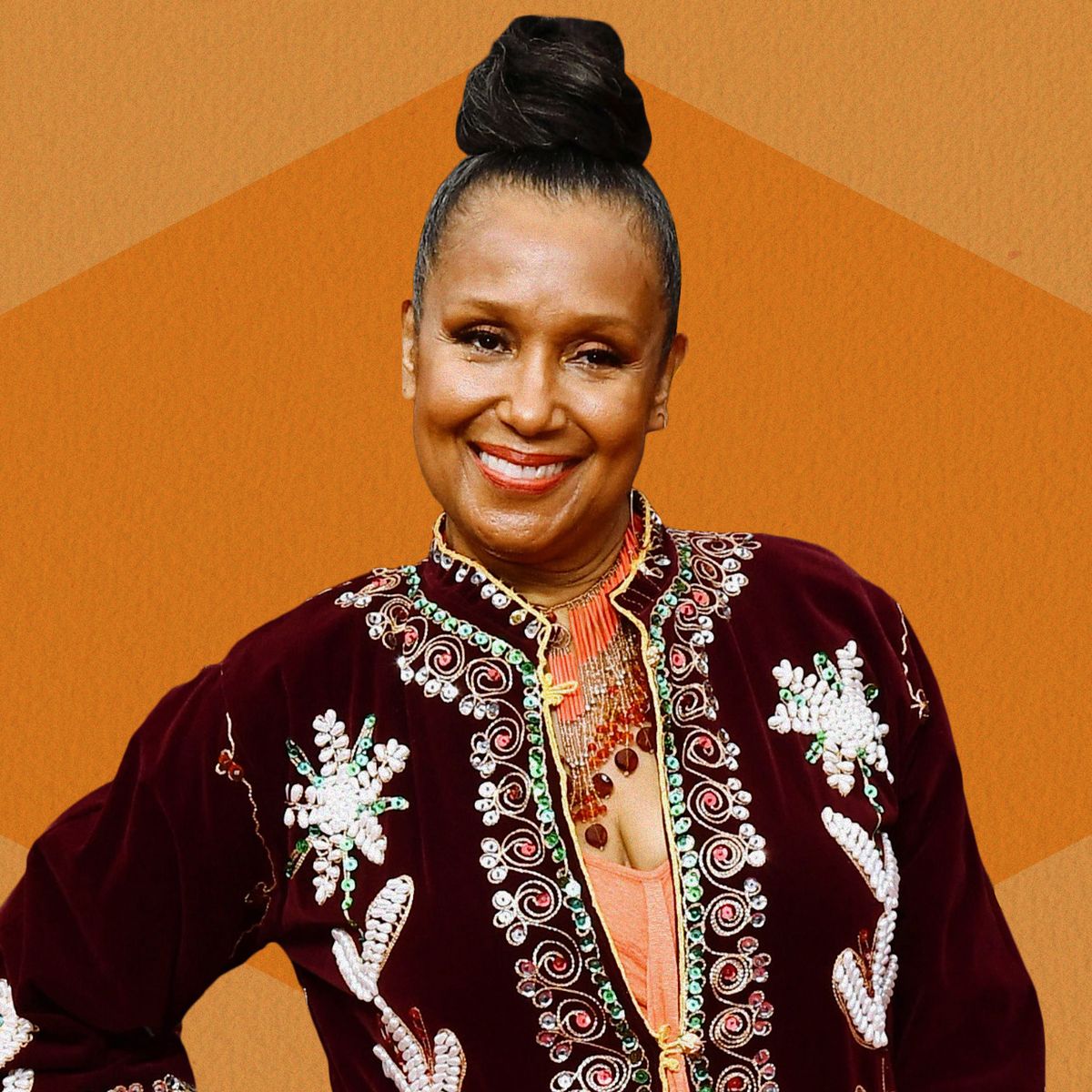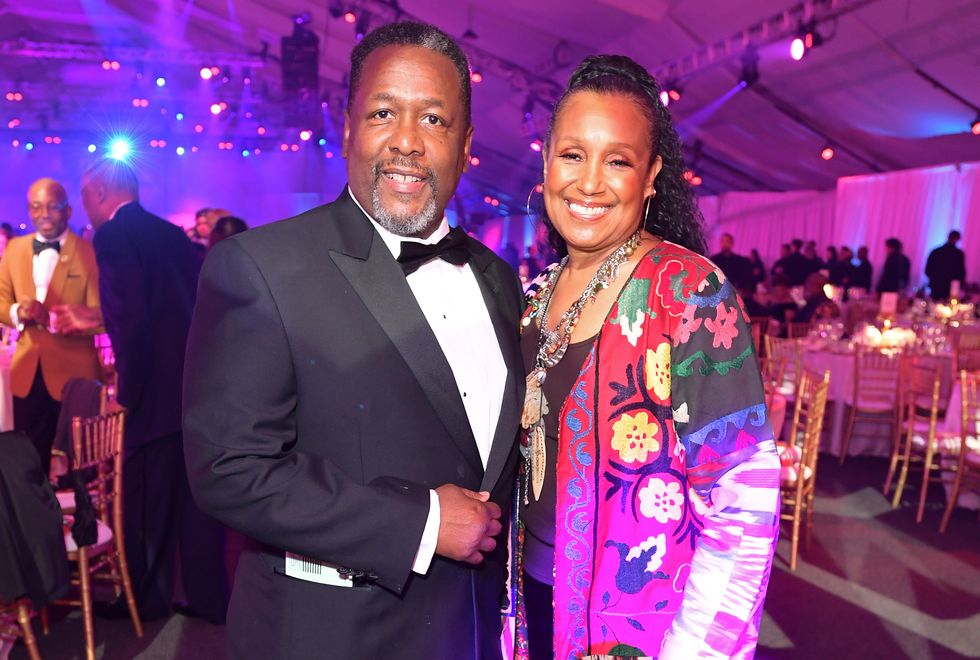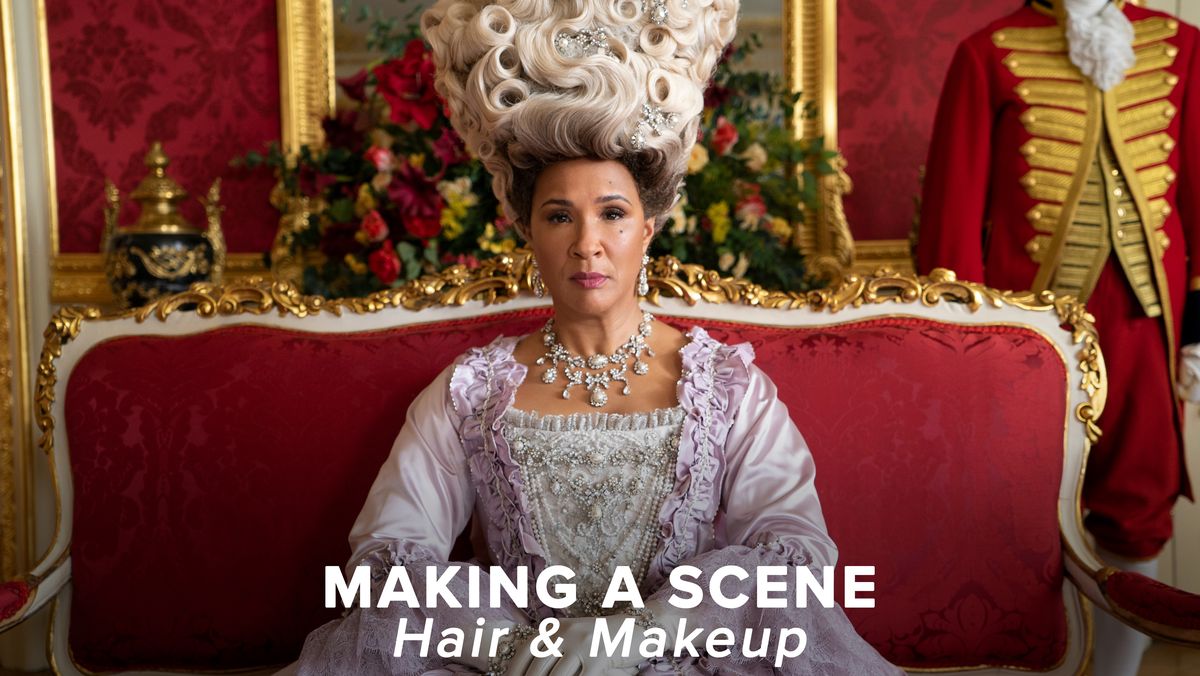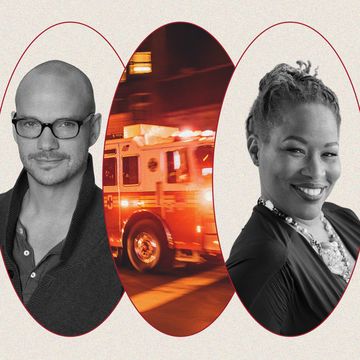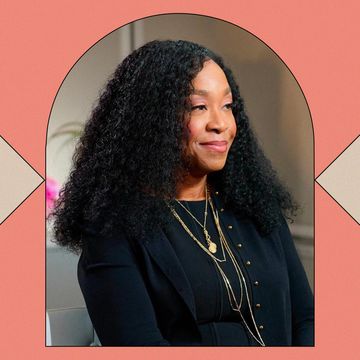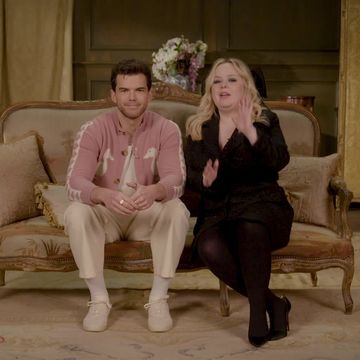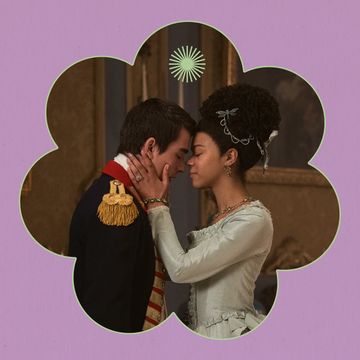This interview was conducted prior to the SAG-AFTRA strike authorization.
Few artists come to an interview with as much warmth and kindness as Debi Young. The NAACP Award winner and four-time Emmy Award nominee doesn’t start our call ticking off her accomplishments. (Though, as makeup-department head on some of the most critically acclaimed shows of our time, including The Wire, Mare of Easttown, Treme, Watchmen, and We Own This City, she certainly could.) Instead, she wants to talk about my son, whose photo she’d seen on Instagram. “How’s your little one?” she asks, starting off our call as if we’d been friends for years and hadn’t met just seconds before.
It quickly becomes apparent that this is second nature for Young, who spends our time together talking more about connection and authenticity than her groundbreaking work. “I just come from a place of love,” she says. “All I want to do is the best work, and if I’m there working with you, I want to help you make your project great.” It’s no wonder so many in entertainment, from The Wire creator David Simon to actor Mahershala Ali, repeatedly request to have “Miss Debi” on their team.
Despite the roster of A-list celebrities she’s worked with, Young’s career began in a place about as far as one can get from the glitz and glamour of Hollywood: the Baltimore Police Department. Though she’d been doing her friends’ makeup for years, she says she never thought of it as a viable career option, so she took a job at the BPD, where she’d do her colleagues’ makeup in the ladies’ room. “What I noticed was that when people got up out of my [makeup] chair, they felt better about themselves,” she says. “It gave me such a charge that my presence with them in this moment meant something.”
After the birth of her second child, Young decided to leave her job to pursue an aesthetician’s license. When a friend began hosting a local television show, she asked Young to do her makeup for free in exchange for screen credit, and it was then that Young’s television production career began.
Such biographical information is critical because to know it is to understand why having a platform — and doing interviews like this one — is so important to Young. “There is an abundance of talent [out there], but there is not an abundance of access and opportunities. How can I show young people that no matter where you live, where you come from, how you look, that if I can do it, you can do it too? If they see it, they can believe it for themselves.”
This generosity of spirit is no act, according to Wendell Pierce, who worked with Young on The Wire and Treme. “First of all, Debi was my therapist,” he tells me, laughing. “You sit in the [makeup] chair; she brings a calm to your day. She’s a woman of great heart and intelligence. She lives an authentic life, and it’s an admirable life. Because of that, she is like a Zen master. They’re always having to rush actors out of her chair because the actors want to spend more time with Debi. She has a great spirit that immediately makes you feel close to her. And she wears her heart on her sleeve so that you can access that care at all times.”
This level of care extends to her work. Whether turning Regina King into Shirley Chisholm for a film biopic, giving Jean Smart rosacea for Mare of Easttown, or adding decay to a corpse for The Wire, Young says, “The most important point is to make sure that it’s authentic.”
“I like gritty scenes,” she says. “If you have a sweaty drunk, I want them to look like a sweaty drunk. I hate more than anything to see somebody wake up in the morning with a full face of makeup because it’s not realistic.”
The Wire, Young says, was “a great training ground” for perfecting this authenticity. Thanks to co-creator Ed Burns’ past experience as a homicide detective and the presence of a medical examiner consultant, Young knew she had to step up her game. “I told Sandy [Linn, a makeup artist], ‘They know what [a corpse] looks like. So, we have to make sure that we know what it really looks like.’ Sandy bought this book on clinical pathology, but to leaf through those pages was so depressing because it was real people who had died. So as I read the script, I would call the consultant and say, ‘Tell me — how does it look if you have been dead for a month and you’re floating in the Baltimore Harbor in February?’ I would let him describe it to me. If he could describe it to me, I could translate it in makeup. And then it was art.”
That said, there were times when it wasn’t all that easy to bring authenticity to the screen. “When we did The Wire,” she says, “my colleague Sandy was my team makeup artist. We were it. There was no makeup effects team; it was us. We got stuff from the craft services table, and she would go home and make noodles for brain matter and stuff like that.”
Having such a skeleton crew taught Young how to think on her feet and bring all aspects of the script to life, even without the proper materials. “I remember there was one director who said to me, ‘We’re gonna have a 14-year-old boy, and he’s gonna get beaten by the police.’ I asked him, ‘How badly beaten do you want him to be? Do you want him to have swelling? Do you want him to have a black eye? Do you want bruising?’ He said, ‘Not too much. No swelling. You can put a little bruising on him to make him look like he’s a little beat up.’ So, I did just as he gave me the notes for, and when the actor went to set, the PA [production assistant] brought him back and said, ‘The director wants him to have a swollen eye.’” Given that the prosthetics hadn’t been made in advance, Young made a quick decision. “I had some broken-finger prosthetics in the drawer. I took a broken pinky finger of a man and made a swollen eye for the young actor, and the director loved it. He had no idea it was a swollen pinky finger that we had [added] onto the actor.”
Over time, Young’s work would take her out of her hometown of Baltimore to places like New Orleans (Treme) and the suburbs of Philadelphia (Mare of Easttown). For every job, she studied the locals, observing even the most minor details. “I would drive through New Orleans,” she says, “and see the people, feel the vibe, hear the way they speak, the way they move. Same thing for Mare of Easttown. My hotel was in Philadelphia, and I would drive down to Delco County to work. And I’m telling you, if you go to a Wawa store or 7-11, watch the people, and just see how they talk, how everyday people made their faces up.”
Pierce, a New Orleans native who played trombonist Antoine Batiste in Treme, says this research was enormously beneficial in realistically bringing the city’s culture to the screen. “The thing about Debi is she is a true artist,” he says. “It’s not happenstance, what she does. She researches, and she delves into her work the same way I do as an actor, as we all do as artists. She is a student of human behavior. She is understanding of what the character is trying to do, where the character is coming from, the history of the character — all of that influences how the character looks.”
He goes on to say that Young’s ability to faithfully bring the nuances of the city to the screen can be traced back to her Baltimore beginnings. “Baltimore and New Orleans are like sister cities, and she comes from a great tradition of West Baltimore off of Pennsylvania Avenue. That’s like what the Harlem Renaissance was in Baltimore. So many Black artists and creatives came from there. And to apply that way of working, of being an artist, a student of human behavior, and then come down to New Orleans, which is such a different culture — she immediately got into the culinary traditions, the traditions of the second line, the cultural traditions of Mardi Gras, of all the things that we were exploring in Treme. Culture is that intersection between life and the people, and how they live that life, and she understands that tenfold and applies that in her work.”
The actor says that when he thinks of Young’s work, two distinct images come to mind. “In The Wire, when Snoop says, ‘Hey, Mike, how do I look?’ right before her assassination. And [in Treme], the heat of Indian practice in a corner bar. You could see and feel the pulsations of the rhythms, of the chanting, of the coming together of that juba — when you see the moisture and the heat that’s emanating from our faces and our mouths, that is because of the artistry of Deborah Young. Those are indelible images that will go with the shows like The Wire and Treme in perpetuity, and it’s because of her great artistry.”
The coming months will be busy for Young, who has completed work on two upcoming projects — the Shirley Chisholm biopic Shirley, starring Regina King, and the psychological thriller Leave the World Behind, starring Julia Roberts and Mahershala Ali — and was in prep for Marvel’s Blade prior to the writers’ strike. But as impressive as those titles are, for Young, they’re not the point. “It’s not about money. It’s not all about even makeup. Having a presence where your presence makes a difference, how you carry yourself, how you help your team — those things [matter].”
When asked what advice she would offer aspiring artists, she says, “Do it because you love it. Don’t run after the money; don’t run after fame, status — run after your passion. And make sure that you are using your gift — and I call it a gift — to add value to the lives of others.” She points out that there’s no such thing as overnight success — it took 20 years of steady practice, hard work, and dedication before she even began a career in television. “Do your research. Go to the library, buy books, look at videos. If you have money to take a class, take a class. You have to put the work in in order to have your project be excellent.”
As we begin to wrap up our call, I run through Young’s accomplishments in my head: four Primetime Emmy Award nominations (for Bessie, The Wiz Live!, True Detective, and Mare of Easttown). An NAACP Award for Outstanding Makeup (Television or Film) — the first time the award was given in that category — for We Own This City. Her contributions to The Wire, referred to by the BBC as “the greatest TV series of the 21st century.” A comparison, made by Wendell Pierce, to Hollywood legends Max Factor and Edith Head.
Then Young reminds me, yet again, what really matters. “It is more than makeup. It’s how you treat people. I lead with love because I want everybody to have their best day, and I want to provide the kind of environment that we can all be excellent in, whether it’s the cast or my crew. I understand that it is much more than makeup. They call me for makeup, but I always know I’m there for so much more. And I’m very blessed for that.”
Sandra Ebejer is a New York-based writer who has contributed to The Boston Globe, The Washington Post, Greatist, Flood Magazine, and The Girlfriend from AARP. Find her on Twitter @sebejer.
Get Shondaland directly in your inbox: SUBSCRIBE TODAY
